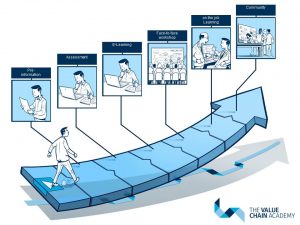‘Becoming a “learning organization” helps in winning the war for talent’


The war for talent is far from over. How should your business tackle it? How can you ensure that your company continues to attract and retain the right people? Here, Alfons Willemsen and Hans van der Drift, partners at Involvation, share their vision on the war for talent.

According to Willemsen, there is an ongoing shortage of skilled professionals: “On the supply side, the market remains very tight. Companies are still really struggling to find people with the right knowledge and experience. And once you’ve got them, it’s hard to keep them too.” If anything, the problem has got worse now that the financial crisis is over. “Employees are finding it easier to switch jobs.” At the same time, Willemsen has noticed a steady rise in the standards demanded by companies in view of the ever-faster pace of technological advancement. “They need people who understand the latest technologies.” That means not only recruiting people externally, but also investing in their existing employees.
Impact
If organizations lack the right expertise, they will quickly run into challenges. Willemsen: “For example, digital innovation is a hot topic right now. Companies find it difficult to figure out how to incorporate digital innovation into their organizational structure, so they often bring in people from outside to do it for them. That can work, but you always need to make sure that the internal organization supports that new direction too – and that also means having people with the right knowledge within your company.”

Van der Drift has noticed that some companies are focusing on rewards in the war for talent. “Offering more money is one way that companies can attract highly skilled professionals. However, we don’t believe this means you will succeed in retaining them. After all, people want to continue to work on their own development. You can set yourself apart as an employer by offering them opportunities to do so.” More and more companies are realizing the benefits of becoming a ‘learning organization’ which facilitates continuous employee development. “We help organizations in that process by developing a learning environment that is not only aimed at new arrivals, but also supports employees that have been with the company for years. You should give everyone the opportunity to keep themselves up to date,” says Willemsen.
Remote training

In today’s modern organizations, a learning environment should actually be very different from what people have grown used to, says Willemsen. “We still have plenty of work to do in terms of explaining that, because most people are still very focused on the traditional way of learning. But we create a continuous learning environment that is not only very different from the traditional classroom-based approach, but also different from traditional e-learning. We’ve developed a new remote training concept which includes the use of new technologies such as virtual reality (VR). This enables us to hold interactive lessons remotely – so still going into the same depth as a face-to-face lesson, but without the travel time (and costs).” According to Willemsen, this new learning approach is very cost-effective. “The learning is linked to the company’s objectives and requirements. Ultimately, it makes a valuable contribution to the business performance.”
If you want to know more about our vision on the leraning organization, please contact Alfons WIllemsen or Hans van der Drift



